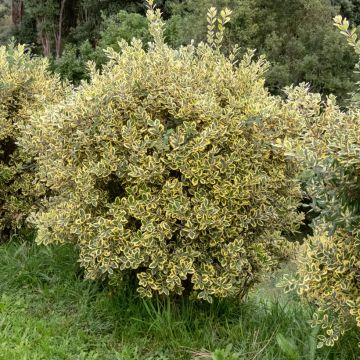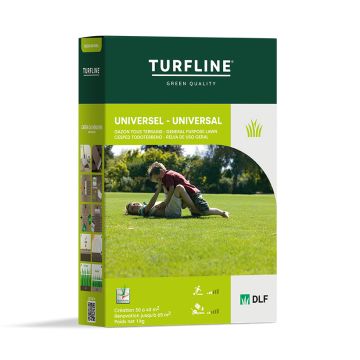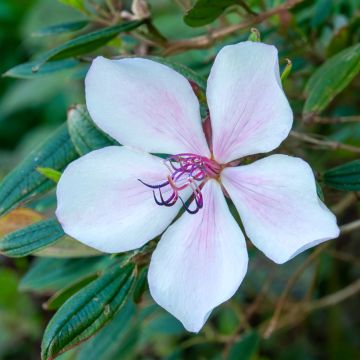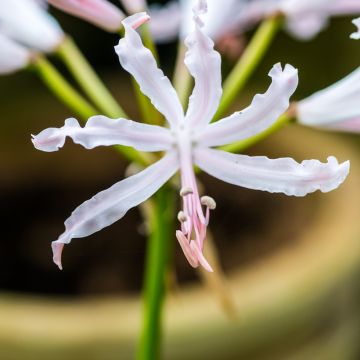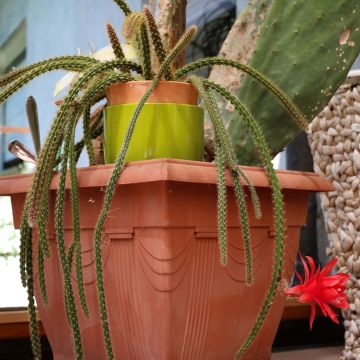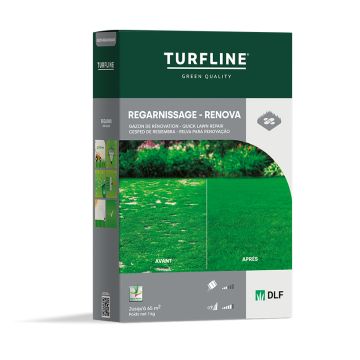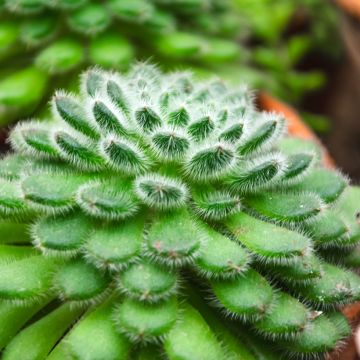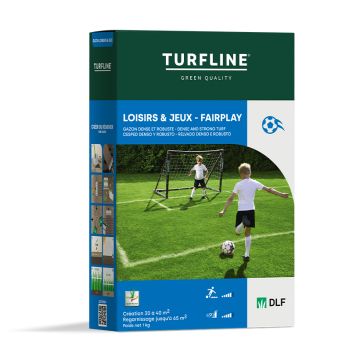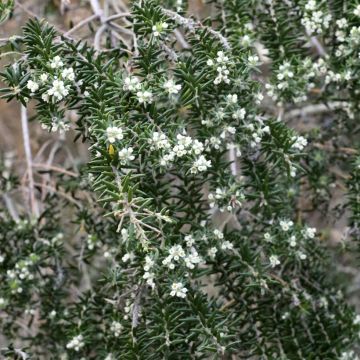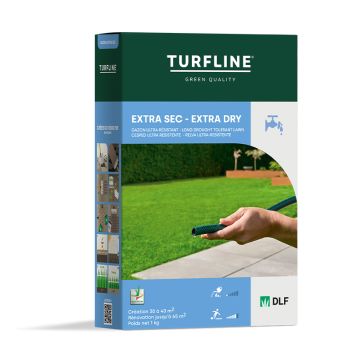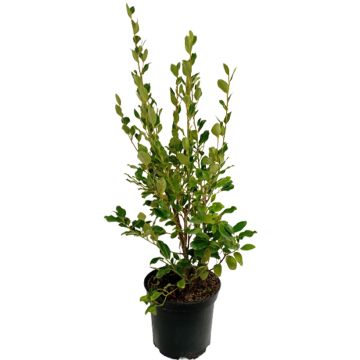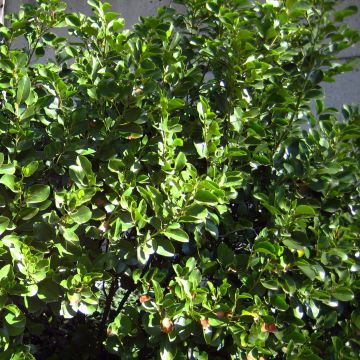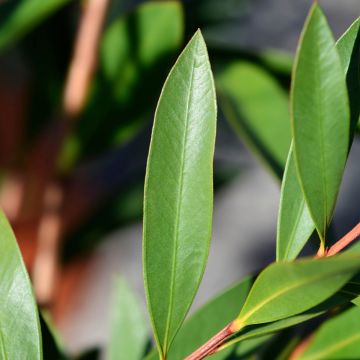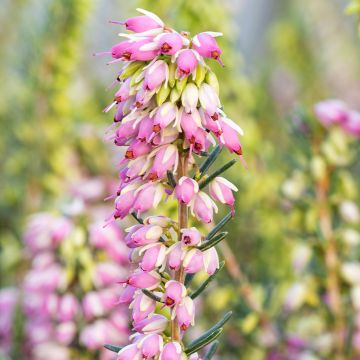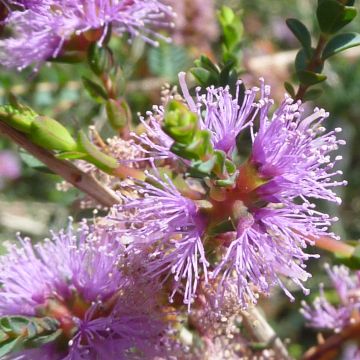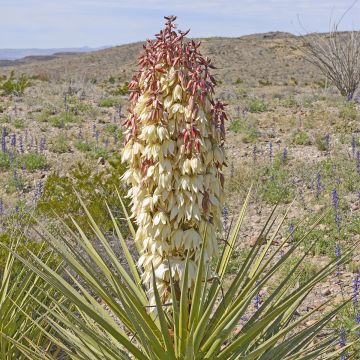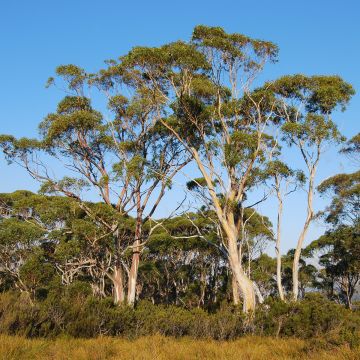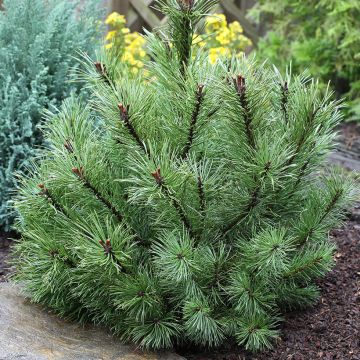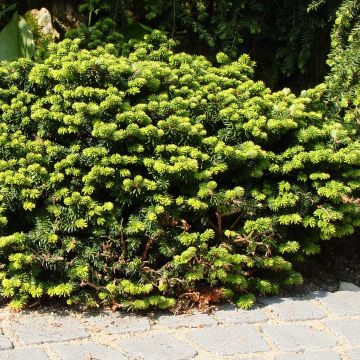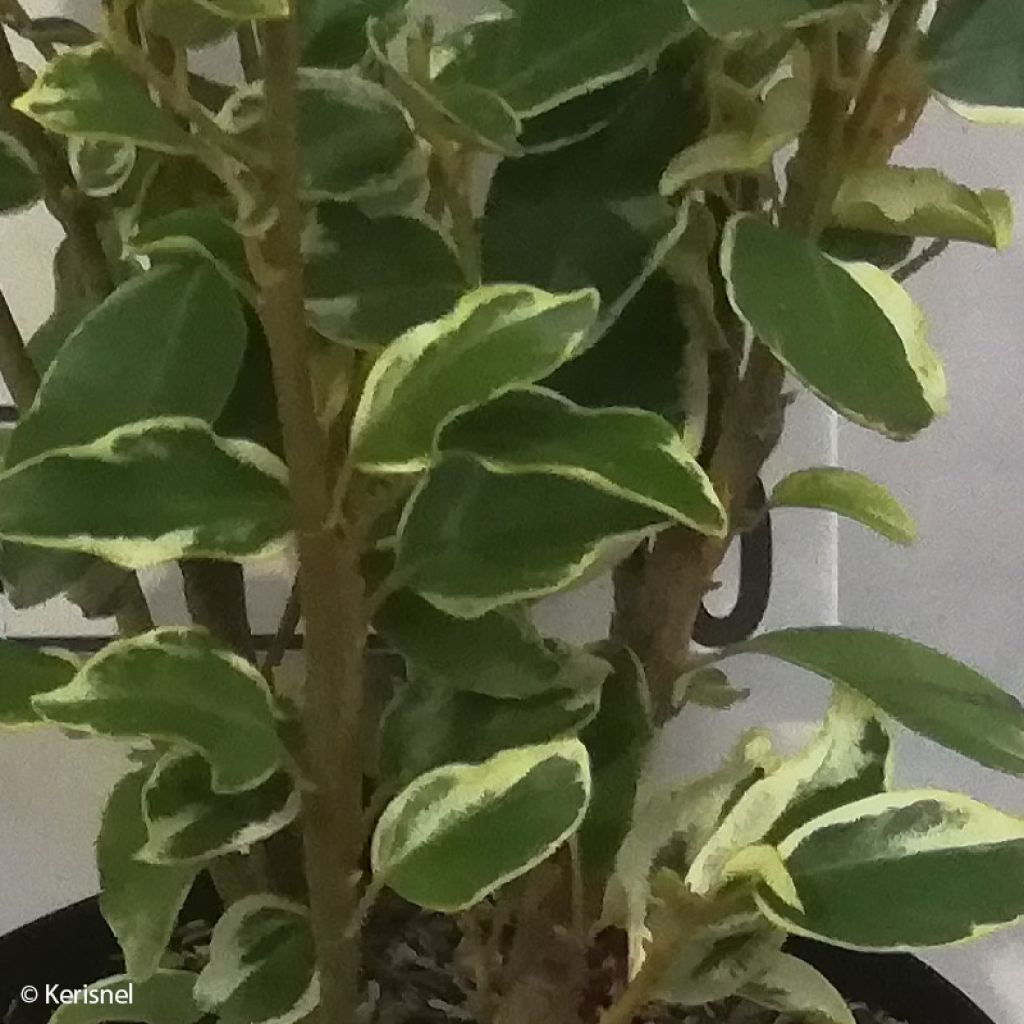

Griselinia littoralis Bantry Bay - Griselinie du littoral
Griselinia littoralis Bantry Bay
Griselinia littoralis Bantry Bay
New Zealand Broadleaf, Kapuka, New Zealand Laurel, New Zealand Privet
Why not try an alternative variety in stock?
View all →This plant carries a 24 months recovery warranty
More information
We guarantee the quality of our plants for a full growing cycle, and will replace at our expense any plant that fails to recover under normal climatic and planting conditions.
From €7.90 for pickup delivery and €6.90 for home delivery
Express home delivery from €8.90.
Does this plant fit my garden?
Set up your Plantfit profile →
Description
Griselinia littoralis Bantry Bay is a variety of coastal Griselinia distinguished by its beautiful variegated yellow foliage, lower hardiness, and slightly less vigorous growth than its New Zealand ancestor. It is an evergreen bush suitable for mild climates that is sometimes called English Euonymus because of its foliage's resemblance to that of Japanese Euonymus. Shimmering in the sunlight, its dense foliage is unaffected by salt spray and provides effective wind protection. Its discreet but highly fragrant spring flowering is followed by the formation of ripe black berries on female plants. Its low hardiness limits it to coastal regions. This bush also adapts well to container cultivation, where it remains elegant.
Griselinia littoralis is a member of the cornaceae family, just like dogwoods. It is endemic to New Zealand, where it grows in forests along the coast up to 900m (2952 ft 10 in) above sea level. While it can become a true tree with multiple trunks reaching 12m (39 ft 5 in) in height in its natural environment, it will not exceed 3m (9 ft 10 in) in height and 2.50m (8 ft 2 in) in spread in our climates, and it will remain even smaller in pots.
The 'Bantry Bay' cultivar was selected in Ireland in 1950. Its hardiness does not exceed -8°C (17.6 °F) once mature. This bush has an upright, bushy, and dense habit, reaching approximately 2.50m (8 ft 2 in) in height at maturity with a spread of 1.50m. Its growth is quite fast in slightly acidic and deep soil. In very chalky soil, growth will be greatly reduced. Its trunk and branches are fairly flexible and covered with smooth yellow-green bark when young, becoming greyish-ochre and fissured over time. The foliage is more or less evergreen depending on winter severity and consists of erect, oval, incurved leaves, ranging from 4 to 12cm (1.6 to 4.7 in) in length. The texture of the young leaves is fine and flexible, then becomes thick, almost succulent, leathery, and very glossy at maturity. They have a variegated cream-yellow and grey-green colour, with a green margin. The flowering, in May-June, is more abundant in full sun but not very visible: it takes the form of small axillary panicles composed of about a hundred small petal-less yellow-green flowers. While often inconspicuous to our eyes, it attracts a large number of pollinating insects, which gather a good harvest of pollen. As this bush is dioecious, only female plants will bear fruits, provided a male plant is planted nearby. These clusters of fruits are composed of small ovoid, sour green berries that turn black when ripe and contain only one seed.
Well suited for coastal areas, Griselinia littoralis Bantry Bay can be used to create hedges on the garden's boundary to protect it from wind and prying eyes. The plant adapts well to container cultivation, placed on terraces or balconies. This cultivation method allows gardeners in cold regions to protect it from severe cold in an unheated greenhouse or conservatory in winter. Its height will be slightly less in pots, but the plant will quickly occupy the available space by spreading. In open ground, it can also be used in a grove, alone or combined with other evergreen bushes such as purple bay laurel, Photinia Pink Marble, Elaeagnus ebbingei, Evergreen Ceanothus or Pittosporum. It will also be very useful for creating a dense screen at the edge of a terrace, facing prevailing winds.
Griselinia littoralis Bantry Bay in pictures
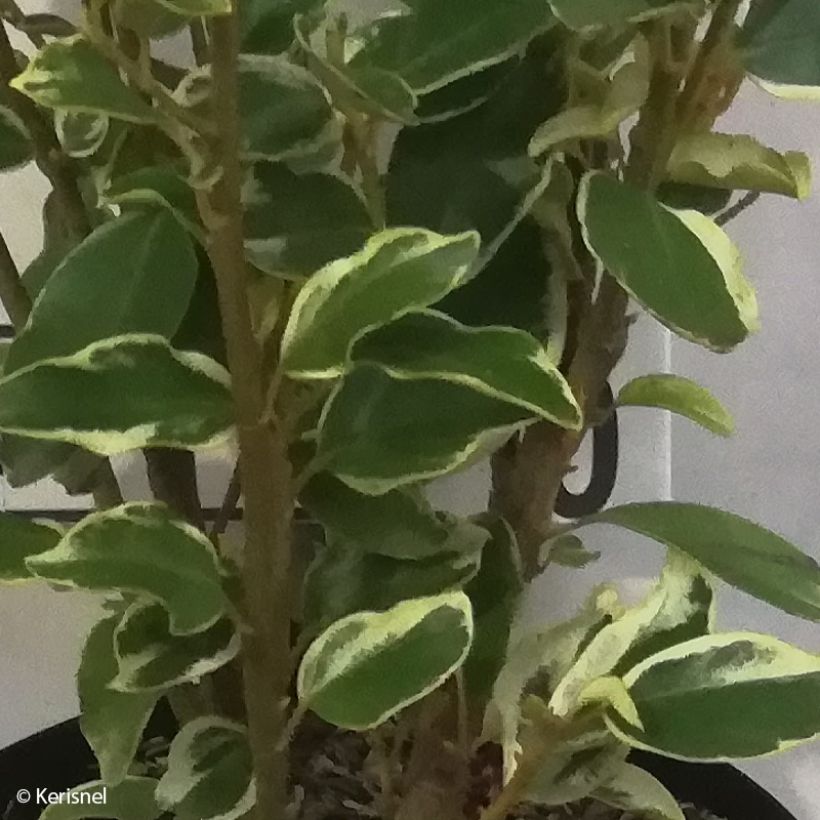

Plant habit
Flowering
Foliage
Botanical data
Griselinia
littoralis
Bantry Bay
Griseliniaceae (Cornaceae)
New Zealand Broadleaf, Kapuka, New Zealand Laurel, New Zealand Privet
Cultivar or hybrid
Other Griselinia
View all →Planting and care
Griselinia littoralis Bantry Bay is best planted in spring, after the last frost in cool climates, or in September-October in warmer and drier climates. Its hardiness does not exceed -7/-8 °C in perfectly drained soil and sheltered from dry and cold winds. Its foliage becomes deciduous in very cold winters or during extended periods of frost. Therefore, it is not recommended to use it on coasts located very far north or in regions with harsh and humid winters. It adapts to any ordinary soil that is properly loosened and well-drained but prefers a light, sandy, humus-rich, deep soil with little limestone, remaining moist to support its growth. This bush dislikes heavy and waterlogged soils in winter and proves to be quite resistant to drought once well-established. Choose a sunny exposure, but not scorching, or partially shaded in hot climates. This bush will be more floriferous in the sun.
It tolerates light pruning done as needed 1 to 2 times a year, after flowering, at the beginning or end of summer. Shorten the branches that detract from its harmony. The cuts must be clean and made with a well-sharpened and clean tool.
Insects and diseases:
Griselinia is not susceptible to pest attacks. However, some fungal diseases are present in moist soil and climate: spots may appear on the leaves.
Planting period
Intended location
Care
This item has not been reviewed yet - be the first to leave a review about it.
Evergreen shrubs
Haven't found what you were looking for?
Hardiness is the lowest winter temperature a plant can endure without suffering serious damage or even dying. However, hardiness is affected by location (a sheltered area, such as a patio), protection (winter cover) and soil type (hardiness is improved by well-drained soil).

Photo Sharing Terms & Conditions
In order to encourage gardeners to interact and share their experiences, Promesse de fleurs offers various media enabling content to be uploaded onto its Site - in particular via the ‘Photo sharing’ module.
The User agrees to refrain from:
- Posting any content that is illegal, prejudicial, insulting, racist, inciteful to hatred, revisionist, contrary to public decency, that infringes on privacy or on the privacy rights of third parties, in particular the publicity rights of persons and goods, intellectual property rights, or the right to privacy.
- Submitting content on behalf of a third party;
- Impersonate the identity of a third party and/or publish any personal information about a third party;
In general, the User undertakes to refrain from any unethical behaviour.
All Content (in particular text, comments, files, images, photos, videos, creative works, etc.), which may be subject to property or intellectual property rights, image or other private rights, shall remain the property of the User, subject to the limited rights granted by the terms of the licence granted by Promesse de fleurs as stated below. Users are at liberty to publish or not to publish such Content on the Site, notably via the ‘Photo Sharing’ facility, and accept that this Content shall be made public and freely accessible, notably on the Internet.
Users further acknowledge, undertake to have ,and guarantee that they hold all necessary rights and permissions to publish such material on the Site, in particular with regard to the legislation in force pertaining to any privacy, property, intellectual property, image, or contractual rights, or rights of any other nature. By publishing such Content on the Site, Users acknowledge accepting full liability as publishers of the Content within the meaning of the law, and grant Promesse de fleurs, free of charge, an inclusive, worldwide licence for the said Content for the entire duration of its publication, including all reproduction, representation, up/downloading, displaying, performing, transmission, and storage rights.
Users also grant permission for their name to be linked to the Content and accept that this link may not always be made available.
By engaging in posting material, Users consent to their Content becoming automatically accessible on the Internet, in particular on other sites and/or blogs and/or web pages of the Promesse de fleurs site, including in particular social pages and the Promesse de fleurs catalogue.
Users may secure the removal of entrusted content free of charge by issuing a simple request via our contact form.

































